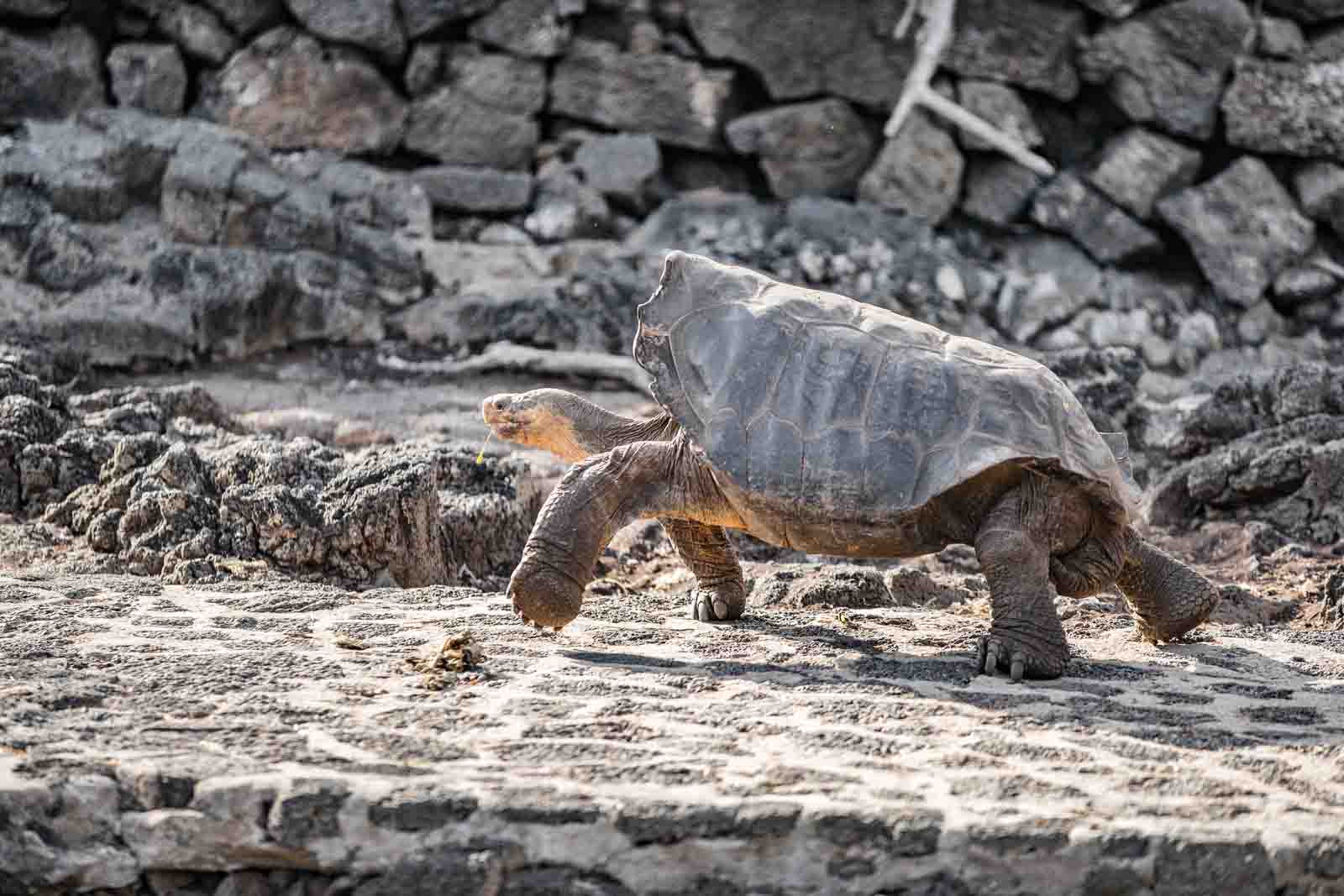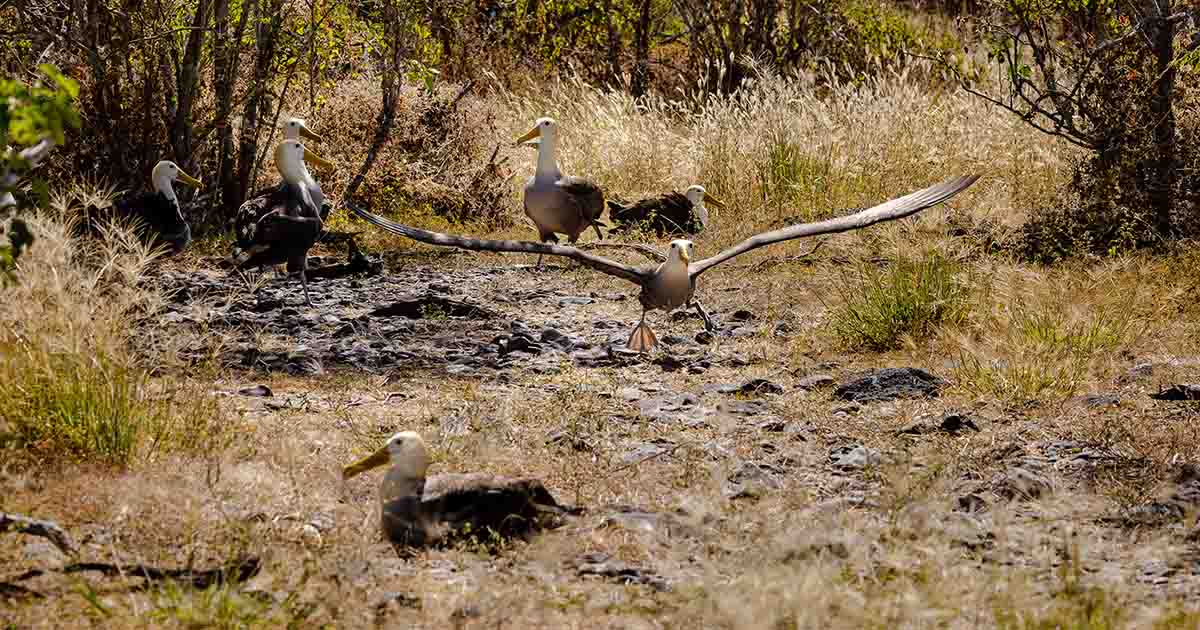
Galapagos Giant Tortoises Prove Their Worth as Ecosystem Engineers | Travel News
In the late 19th century, the ecology of the Galapagos Islands underwent significant changes due to activities like poaching native species such as Galapagos giant tortoises and the introduction of other species like goats and rats by whalers, settlers, and pirates. The newly introduced species, especially goats and rats, disrupted the island ecosystems by becoming pests. Goats excessively grazed the fruits and plants that were crucial for the tortoises, while rats preyed on tortoise eggs, leading to a dramatic decline in the tortoise population. On Española, an island in the southeastern part of the archipelago, the tortoise population dropped from over 10,000 to a mere 14. As goats consumed nearly all available vegetation, Española, once resembling a savanna, turned into a barren landscape.
A century later, conservationists embarked on a mission to restore the Galapagos giant tortoise population on Española and rehabilitate the island's ecosystem. They initiated efforts to eliminate the introduced species and began capturing the remaining Española tortoises for captive breeding. With the removal of goats and the safeguarding of the tortoises in captivity, the ecosystem underwent another transformation. This time, the overgrazed terrain saw the resurgence of densely packed trees and woody bushes. The complete recovery of Española to its savanna-like state awaited the return of the tortoises.

Between 1963 and 1974, 14 tortoises were taken into captivity, and by 2020, conservationists from the NGO Galápagos Conservancy and the Galapagos National Park Directorate successfully reintroduced nearly 2,000 captive-bred Galapagos giant tortoises to Española. Subsequently, in the wild, these tortoises continued to breed, resulting in an estimated population of 3,000. This return of the tortoises triggered a transformation in the ecology of Española once again, as they started reducing the prevalence of woody plants, expanding grasslands, and aiding in the dispersion of key plant species.
Furthermore, the comeback of the tortoises has provided assistance to the critically endangered waved albatross, a species exclusive to Española. In the period when the island was densely wooded, people had to regularly clear the areas used by the seabirds as runways for takeoff and landing. However, with the tortoises' return, they now play a role in maintaining these areas, preventing them from becoming overgrown.

The secret to this success is that—much like beavers, brown bears, and elephants—giant tortoises are ecological architects. As they browse, poop, and plod about, they alter the landscape. They trample young trees and bushes before they can grow big enough to block the albatrosses’ way. The giant tortoises likewise have a potent impact on the giant species of prickly pear cactuses that call Española home—one of the tortoises’ favorite foods and an essential resource for the island’s other inhabitants.
When the tortoises graze the cactus’s fallen leaves, they prevent the paddle-shaped pads from taking root and competing with their parents. And, after they eat the cactus’s fruit, they drop the seeds across the island in balls of dung that offer a protective shell of fertilizer.
The extent of these and other ecological effects of the tortoise are documented in a new study by James Gibbs, a conservation scientist and the president of the Galápagos Conservancy, and Washington Tapia Aguilera, the director of the giant tortoise restoration program at the Galápagos Conservancy.
To study these impacts up close, they fenced off some of the island’s cactuses, which gave them a way to assess how the landscapes evolve when they’re either exposed to or free from the tortoises’ influences. They also studied satellite imagery of the island captured between 2006 and 2020 and found that while parts of the island are still seeing an increase in the density of bushes and trees, places where the tortoises have rebounded are more open and savanna-like.
As few as one or two tortoises per hectare, the scientists write, is enough to trigger a shift in the landscape.
Dennis Hansen, a conservation ecologist who has worked with the tortoises native to the Aldabra atoll in the Indian Ocean, says that while the findings line up with what conservationists expected, it was nice to have their suspicions confirmed. The results bode well for other rewilding projects that include giant tortoise restoration as a keystone of their efforts, he says, such as those underway on other islands in the Galapagos archipelago and on the Mascarene Islands in the Indian Ocean.
But on Española itself, though the tortoises have been busy stomping shoots and spreading seeds, they have more work to do. In 2020, 78 percent of Española was still dominated by woody vegetation. Gibbs says it may take another couple of centuries for Española’s giant tortoises to reestablish something like the ratio of grasses, trees, and bushes that existed before Europeans landed in the archipelago. But that long transformation is at least underway.

